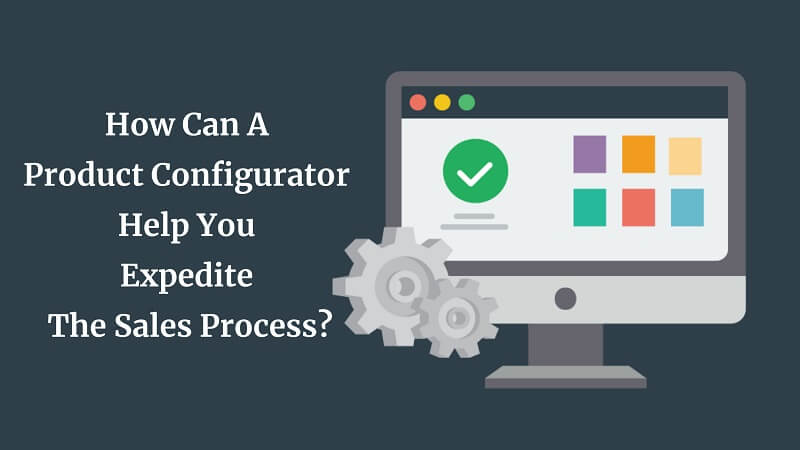
How Can A Product Configurator Help You Expedite The Sales Process?
in Technology on December 7, 2022Product setup and connecting a product configuration website with your e-commerce site do not have to be complicated processes. However, it would help if you chose which product configurator is appropriate for your company. It would help if you also kept in mind that as technology has developed over the years, so have customer demands and expectations.
Brands must communicate their products visually and interactively. Furthermore, businesses must be able to demonstrate the breadth of their product catalogue, as well as the value of complex goods and solutions. Finally, they must do so in a way that will attract, engage, and keep clients.
Some of the most significant advantages of employing a product configurator for sales teams include:
- Integration with e-commerce sites, CRM systems, and other retail platforms
- Error reduction while ordering and processing
- Streamlined ordering process
- Removes consumers’ uncertainty from the purchase process, making it easier for sales professionals to depict complicated items
- Provides clients with real-time product pictures
- A faster and more accurate quotation
- Streamlines the ordering process and improves contact with distributors
- Improved inventory availability accuracy
- More time to perform other critical sales responsibilities
appropriately
As seen above, a product configurator may be incredibly beneficial to both a company’s sales team and potential buyers.
Furniture Industry and Product Configuration
Businesses need help to figure out how to show all potential combinations of their furniture goods to alleviate client problems and produce a more compelling experience that influences a buying choice. High-quality 3D product configurations solve this problem, which allows online customers to find more furniture product options than they would in a physical showroom.
Within the furniture sector, software becomes a crucial solution configurator for product configuration. Everyone, from office managers to homeowners, is shopping for furniture, and many increasingly choose to do it online because it is more convenient and takes less time.
The Role of a Product Configurator
If businesses want to prevent product waste and surplus inventory, they must more accurately predict customer demand. To do this, they must consider specific industry trends and be thoroughly aware of each customer’s needs.
Product configurators, which enable customers to customize product options for the optimal purchase experience, may be used by businesses to use this information to guide production and inventory. With the right technology, you’ll have access to real-time data that might be very useful for your waste reduction efforts and planning in the future. Also, you can use the best inventory management tools and plugins.
Product Configurator Types
Product configurators are classified into numerous kinds. Two are commercially employed daily, while the other two represent a whole new way of looking at the product configuration sector due to the usage of advanced virtual reality (VR) and augmented reality (AR) technology.
Web-Based Product Builder
An application known as a browser-based product configurator is typically installed on websites, especially e-commerce websites. It enables customers to alter the look, feel, and features of a product in real-time.
Numerous Sectors Employ Web-Based Product Configurators, Including:
Automotive, interior design, manufacturing, fashion design, architecture, and retail are among the disciplines. Depending on the product you’re selling, a web-based product configurator might be.
A Product Configurator on The Go
- A mobile product configurator is a comparable application to an online product configurator; however, it serves somewhat different functions.
- A mobile product configurator can accommodate a large number of choices for a product. For example, a shed, porch, room design, manufacturing components configurator, or any other sophisticated configurator that takes much thought and preparation.
- A configurator like this is widely used by sales representatives who quickly offline need access while presenting a product to a client or a business. The solution is employed.
Product Configurator for Virtual Reality
- Because it makes use of the capability of devices like the Oculus Rift S and HTC Vive, a VR product configurator offers a novel approach to the whole product configuration market.
- A VR product configurator differs from the other configurators in that it only allows access to VR devices. It also employs a completely computerized, virtual environment in which to configure a product.
- This technology is gaining traction and has the potential to be highly beneficial in the future. Users may construct 3D models in the virtual world using Google’s Blocks program, so customizing a product feels normal.
Online and Offline Product Configurators Have Different Features
- Examples of product configurators could already be present in a retail environment. As an illustration, Invita, a well-known kitchen supplier, uses a kitchen configurator in their showroom to show consumers high-quality 3D models of several kitchen designs, depending on their preferences and selections.
- By switching from standard photographs to 3D imaging, Invita has been able to boost sales and make sure that its clients will never forget their pleasant shopping experience. Customers no longer have to try to visualize what their new kitchen would look like; instead, they can view many combinations of kitchen designs in real time, giving them more confidence in their purchase.
Considerations To Ponder While Selecting An eCommerce Product Configurator
- Product configurators are offered in 2D and 3D rendering. A poll, however, discovered that around 83% of buyers prefer high-quality product photos when making purchasing selections [I]. As a result, it stands to reason that a 3D depiction will retain the consumer’s attention longer than a 2D image.
- Using a 3D configurator can improve user involvement by up to 66% [II]. In addition, configurators are classified according to their functions and size. Slimmer, simpler versions are largely utilized for inspiration and marketing. They do not necessitate a large number of resources or a complex IT infrastructure to work. On the other end of the range are sales configurators that are fully integrated into the sales process.

